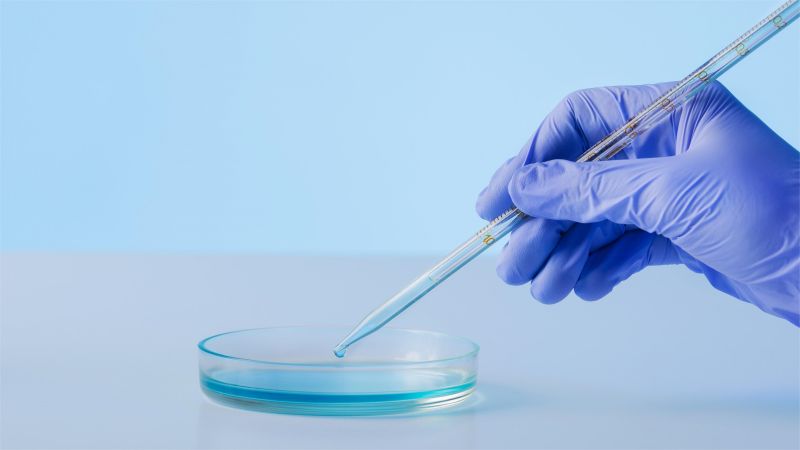
Gym Essentials For Women:A Complete List
Enthusiasts who never miss a session, understanding the gym essentials for women is crucial, not just for what to wear but also for what to

When considering the question of what happens if you drink moldy water, it’s essential to understand the potential risks and effects on health.
Mold is a type of fungus that can grow in a variety of environments, especially those that are warm and moist. When mold grows in a drinking container or in the liquid itself, it can pose a hazard if consumed.
The health implications can range from mild to severe, including allergic reactions, digestive problems, and in rare cases, more serious conditions due to the production of toxins by certain types of mold.
Understanding the consequences of ingesting mold and how to prevent mold growth in your drinking containers is crucial for maintaining good health and hygiene.
Mold’s unsightly appearance in your water bottle is just the tip of the iceberg.
Its presence raises health, hygiene, and quality concerns. Here’s why you should pay attention:
Black mold, predominantly from the species Stachybotrys chartarum, has been labeled “toxic mold” in popular discourse.
But what does its presence in a bottle mean for you?
Mold is a ubiquitous fungus that thrives in moist conditions. When water is left stagnant in a bottle or container, especially in warm environments, it provides an ideal breeding ground for mold spores to germinate and grow.
Coupled with any organic residues present, such as backwash or remnants of beverages, this creates a perfect habitat for mold.
Furthermore, the presence of mold in water containers indicates either prolonged storage without proper cleaning or a compromised environment.
Regular cleaning and ensuring the storage container is adequately dried can help in preventing mold growth.
Toxic mold, primarily associated with species like Stachybotrys Chartarum, is a concern due to its ability to produce mycotoxins.
These compounds can pose health risks when inhaled, ingested, or come in contact with skin. Mold thrives in damp, warm environments, often growing unnoticed behind walls, under floors, or in other hidden areas.
Prolonged exposure can lead to symptoms such as allergic reactions, respiratory issues, and, in severe cases, neurological problems or immune suppression.
The sneaky nature of mold growth, combined with its potential health impacts, makes it a significant concern in both residential and commercial settings.
If you’ve taken a sip from a bottle or cup and immediately felt off, there could be a few reasons behind that sensation.
First, the liquid could have been contaminated. Over time, especially if the container isn’t cleaned and dried regularly, molds, bacteria, or algae can grow, affecting the taste and safety of the water. Drinking such water can introduce foreign substances into your system.
While the stomach’s acidity often neutralizes many pathogens, some might still trigger feelings of discomfort or a sudden change in taste, making you feel uneasy or even nauseated.
Secondly, our senses, especially taste and smell, are closely connected to our brain’s processing centers. If you detect an off flavor, your brain might signal that something’s amiss, leading to psychological discomfort.
This can manifest as a sudden feeling of unease, anxiousness, or a heightened awareness of bodily sensations. Always trust your instincts; if something feels or tastes off, it’s better to avoid consumption and ensure your containers are clean and safe for future use.
If you’ve accidentally consumed water contaminated with mold, here’s what you should know:
1. Don’t Panic: In most cases, consuming a small amount of mold isn’t harmful, especially if it’s an isolated incident. Our digestive systems are designed to handle various microbes, and mold is typically destroyed in the stomach’s acidic environment.
2. Possible Symptoms: Some people might experience symptoms after ingesting mold, especially if they’re allergic or sensitive to mold. These can include:
3. What to Do
4. Prevention: To avoid such incidents in the future
Determining if your water bottle is unsanitary involves both visual inspection and sensory evaluation. Here’s a simple guide to check:
1. Visual Inspection
2. Smell Test: A clean water bottle should be odorless. If you detect a musty, stale, or unusual odor, it’s a sign that your bottle needs a thorough cleaning.
3. Taste: If your water has an off or unusual taste, even if it looks clear, avoid drinking it. This could be an indication of bacterial growth or contamination.
4. Touch: Feel the inner surface of the bottle. If it’s slimy or slippery, it might have bacterial or algal growth.
To keep your water bottle clean
Remember, a clean bottle is essential not just for taste but also for your health. Regular maintenance can prevent bacterial and mold growth, ensuring you stay hydrated safely.
If you drink mold, you may experience minor to severe health effects, depending on your sensitivity and mold type. It’s vital to stay informed and take precautions.
Stagnant water provides the moisture that mold needs to grow, especially in warm or humid conditions. To prevent mold growth, it’s crucial to regularly clean and thoroughly dry containers where water is stored.
Both plastic and glass can host mold if conditions are favorable. However, plastic is more porous than glass, making it easier for mold to adhere and grow.
Glass, being non-porous, offers less grip for mold. Proper cleaning and drying are essential for both materials to prevent mold growth.
Moldy water can range from being relatively harmless to potentially harmful, depending on the type of mold and individual sensitivities.
While a single sip might not cause severe issues, continuous consumption can lead to symptoms like digestive discomfort or allergic reactions, especially if the mold produces toxins. Regular consumption is not advisable.
Children, especially infants with developing immune systems, are more susceptible to the effects of mold exposure.
Ingesting moldy water can lead to digestive upsets, allergic reactions, or respiratory issues in kids. It’s essential to ensure their drinking sources are clean and mold-free.


Enthusiasts who never miss a session, understanding the gym essentials for women is crucial, not just for what to wear but also for what to

A common myth circulating in the fitness world is the belief that a gym diet plan is unnecessary. Many seem convinced that they can simply

The average bench press, often referred to humorously in gyms as ‘How much ya bench’ or ‘whaddaya bench?’, stands as a quintessential measure of strength

Nowadays, we always seem to be packing a bag for something. Whether it’s getting ready for work with your messenger bag or briefcase, filling up

Enthusiasts who never miss a session, understanding the gym essentials for women is crucial, not just for what to wear but also for what to

A common myth circulating in the fitness world is the belief that a gym diet plan is unnecessary. Many seem convinced that they can simply

The average bench press, often referred to humorously in gyms as ‘How much ya bench’ or ‘whaddaya bench?’, stands as a quintessential measure of strength

Nowadays, we always seem to be packing a bag for something. Whether it’s getting ready for work with your messenger bag or briefcase, filling up
Copyright © 2025 remindsmartbottles. All Rights Reserved.
Copy the coupon code below and fill it in when you purchase to enjoy!
newuser